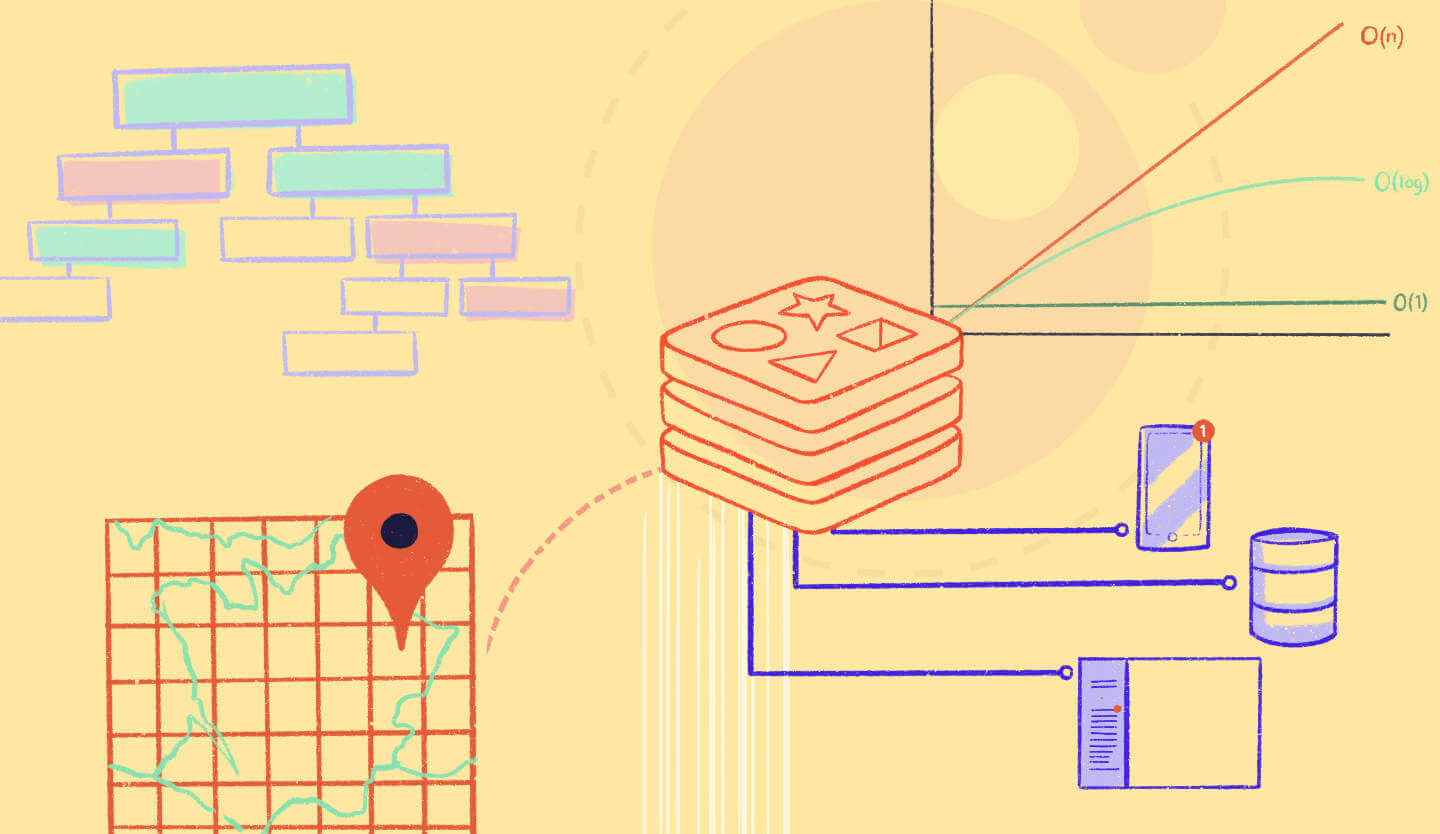RU101 · Self paced
Introduction to Redis data structures
New to Redis? Learn all about Redis’ core data structures, and see how to apply them in the real world.
What you’ll learn
RU101 is an introductory course, perfect for developers new to Redis. In this course, you’ll learn about the data structures in Redis, and you’ll see how to practically apply them in the real world.
The course covers all of Redis’s most-used data structures, including strings, hashes, lists, sets, and sorted sets. Since Redis is often used for high-throughput, low-latency applications, we’ll be sure to cover the time-complexity of the various Redis commands so that you can select the most efficient data structures to solve your domain problem.
You’ll also learn about specialized Redis data structures such as geospatial indexes and bit fields. And you’ll see how to model capped collections, perform set operations, and take advantage of Redis pub/sub.
Finally, you’ll get an introduction to Redis’s powerful Lua scripting capabilities.
What’s it Like to Take RU101?
Suze Shardlow, our Developer Community Manager, completed RU101 while learning in public on our Twitch channel. You can find recordings of all of the streams on our YouTube channel. Here’s the video of the first one, covering what RU101 is all about and how to get set up with Redis in the cloud:
Reviews of RU101
- Class Central reviewed RU101 and rated it 5 stars!
What you’ll build
To make the material interesting and practical, the course examples model a system for hosting the Redis Games, a worldwide sporting event! You’ll use the Redis CLI to interact with the data models, and coded solutions will be provided in Python.
Course Outline
Week 1
- Course Introduction
- Data Structures
- Keys & Expiration
- Strings
- Hashes
- Lists
- Sets
- Sorted Sets
Week 2
- Capped Collections & Set Operations
- Use Case: Faceted Search
- Object Inspection
- Set Intersection
- Hashing & Compound Keys
- Performance
- Big-O Notation
Week 3
- Transactions
- Basic Transactions
- Optimistic Concurrency Control
- Object Storage
- Simple Objects
- Nesting, Relationships, & Folding
- Use Case: Inventory Control
- Overview
- Reservations
- Expiration of Reservations
Week 4
- Bitfields
- Use Case: Seat Reservations
- Domain Problem
- Creating Seat Maps
- Checking Availability
- Reserving Seats
- Publish / Subscribe
- Use Case: Fan out
- Syndication of Events
- Filtered Events
Week 5
- Geospatial
- Use Case: Finding Venues
- Creating Geospatial Objects
- Finding Venues from Another Point or Venue
- Calculating Distances
- Lua Scripting
- Use Case: Inventory Control with Lua
- Managing and Executing Scripts
- Purchase Workflow
- Reserving Tickets
Week 6
- Final Exam
- Course Number
- RU101
- Starts
- January 23, 2024
- Ends
- March 07, 2024
- Estimated Effort
- ~ 3 hours per week
Software Requirements
- Web Browser: Firefox 39.0+ or Chrome 43+
- Operating System: Mac OS X 10.7+ 64-bit, Ubuntu 14.04+ 64-bit, or Windows 10
- Software: RedisInsight, Redis Stack in the Cloud (or Docker and local installs of Python 3 and Redis Stack)
- Access to youtube.com, university.redis.com and github.com

Alvin was Chief Education Officer at Redis, and has held various executive roles, most recently as the Field Chief Technology Officer at MariaDB, Vice President of Product at Aerospike, and engineering lead at MongoDB. He has worked with SaaS startups, enterprise storage (NetApp) and byte-code virtualization, and containers (Docker). Alvin’s early experience as a software engineer at Oracle provided a springboard for his career success building and leading engineering teams across the globe.
Alvin holds a computer science degree from Thames Valley University and a Bachelor of Arts in photography from Nottingham Trent University, both in Great Britain.

Kyle Banker is the Senior Director of Field Engineering at Redis. He’s worked extensively in data engineering, is enthusiastic about data stores and distributed systems, and is passionate about explaining technology as clearly as possible.

Make it official
Become a Redis-certified developer when you complete this program.
Learn more